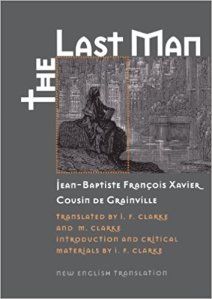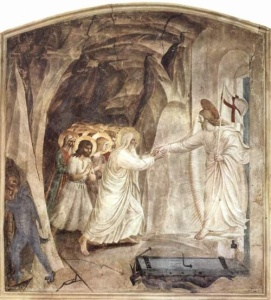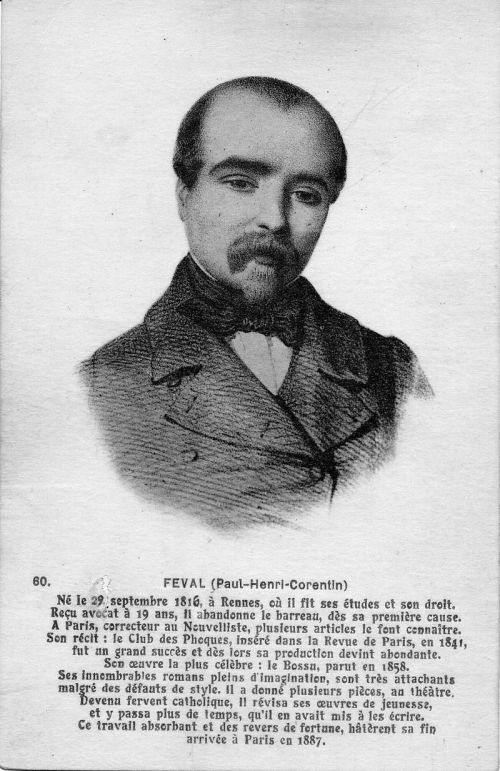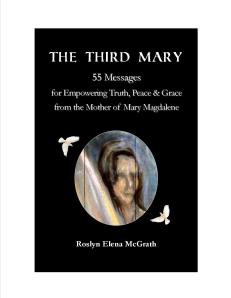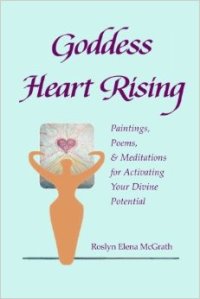The World’s Desire (1890) is one of the most interesting, strange, possibly sexist, and only partially satisfying novels I have ever read. This collaboration between H. Rider Haggard and Andrew Lang deserves to be far better known simply because it is a collaboration between two of the great Victorian writers of adventure novels, or male romance, but more so, because of its fascinating Gothic wanderer figures—Odysseus, Helen, and Meriamun.
The World’s Desire will not appeal to all readers—it’s definitely a novel written for men rather than women, but it is also a book deserving of attention. Written as a sequel to Homer’s Odyssey, literary critics have praised Lang for his ability to recreate Homer’s style and diction. That said, I feel the hand of Haggard more firmly in it. The novel is in his style and tone largely and reads like a strange sort of dream that reminds me especially of one of my favorite of his works, The Ghost Kings, as well as the Conan stories of Robert Howard. The atmosphere is very Gothic, and the theme is Gothic, without the typical Gothic trappings of castles. The supernatural is prevalent throughout the novel, though more in the form of Greek goddesses and biblical plagues than typical ghosts.
The story begins with Odysseus returning home from a second voyage he made after his initial return to Ithaca at the end of The Odyssey. He reaches Ithaca only to find that plague has killed everyone there, including his wife. He goes to the temple of Aphrodite to pray and ask for direction and she tells him he has always followed Athena, not her, but now it is time for him to follow her and truly have a great love. He is to seek Helen of Troy, to learn what became of her, and with her he shall know true passion. Unsure how to find her, Odysseus prepares for the search by putting on the armor of Paris that he received as a gift from Menelaus. Then the island is invaded by slavers who kidnap him. They take him to Egypt, where he manages to escape from them by slaughtering them.
Once in Egypt, Odysseus (who throughout most of the novel is referred to as “the Wanderer”) hears stories of terrible plagues that are happening. (These are the Biblical plagues of Exodus.) He is told that some blame the plagues on the Apiru (Hebrews) who wish to be set free from being Pharaoh’s slaves, but others blame the goddess Hathor or the one who poses as her. The most beautiful woman in the world is living in Hathor’s temple, claiming to be her, and some believe the true goddess is punishing Egypt in anger over the impostor.
Eventually, Odysseus makes his way to the Pharaoh’s presence. All this while he wears Paris’ armor and does not give his true name to anyone. Pharaoh is married to his half-sister, Meriamun. She only agreed to marry him in exchange for equal power with him. She is also a sorceress, and she comes to recognize Odysseus’ true identity and love him. Odysseus, however, is not interested in Meriamun and instead believes Hathor may be Helen, so he goes to the temple to see her, even though he is warned that all the men who have dared look upon her have died, struck down by some ghostly spirits that guard her. Of course, Odysseus survives. Helen is surprised to see him, fearing he is Paris’ ghost at first. Once he reveals his true identity to her, they swear their love for each other.
However, Meriamun is furious. She hates Helen for being the only woman in the world more beautiful than her, and now, she hates her for having Odysseus’ love. Through sorcery, she makes a Faustian pact with the Snake, also known as Sin (the biblical Garden of Eden snake clearly); she must always carry him about her like a girdle, and in exchange, she is able to change her image to be that of Helen. Of course, she seduces Odysseus, and while they sleep, the Snake curls itself about them.
When Odysseus learns he has been tricked, he is devastated, and it doesn’t help that Meriamun accuses him of raping her and has him throne in prison. Her goal now is to kill both Odysseus and Helen. Meanwhile, Pharaoh has been off pursuing the Apiru at the Red Sea and has lost his army. He returns and has a terrible dream (created by Meriamun’s sorcery) that convinces him, since his army is gone, he must send Odysseus to fight his other enemies coming from over the sea to attack Egypt, so off Odysseus goes to serve Pharaoh. Aphrodite tells Odysseus the only way he can be purged of his sin from being with Meriamun is to do so.
Meriamun now poisons Pharaoh and places the blames for his death on Hathor, who is still blamed even though the plagues have ended with the Apiru’s departure because so many men have died from looking at her. Meriamun gets the Egyptian women to attack the temple where Helen lives but Helen escapes.

H. Rider Haggard is today best known for King Solomon’s Mines, but his bestselling novel She introduced a powerful Gothic supernatural woman that would fascinate readers for centuries. Meriamun of The World’s Desire is very much written in her shadow.
Odysseus is now fighting the men from over the sea, including “Wolf, the Son of Signy, Son of the were-wolf” who is a “wanderer from an evil race that of old had smitten his [Odysseus’s] ships and devoured his men.” He is a giant man so one assumes he might be kin to the Cyclops. But Odysseus manages to kill him. Helen now arrives at the battle to come to Odysseus’ aid, but it is too late. Telegonus, the son of Circe and Odysseus, thinking Odysseus is Paris, shoots him with an arrow that kills him. Odysseus does not die, however, before revealing his identity to his son. Telegonus says he has been seeking his father all this time but now he has slain him. Odysseus dies on Helen’s breast with the promise that they have been together in past lives and will be together in future ones. They will meet again and then “our sin be purged and peace be won, and the veil be drawn from the face of Truth.”
Meriamun is present at the funeral when Odysseus is burnt on a pyre. In her agony over Odysseus’ death, she tears from her the snake she must wear as a girdle according to her Faustian pact. She casts it into the fire, but the priest Rei (the narrator of the book) tells her that because of her vow, she must go where the snake goes. She is then drawn to the fire and casts herself onto Odysseus’s body. The snake then wraps itself around both of them and laughs. (The reader is left with the impression that Sin rather than Love has conquered.)
The novel ends with Helen wandering into the night and into the desert, and we are told she will wander until the Wanderer comes again.
A strange novel. Critics have suggested that Odysseus is an imperial Gothic hero, one not a part of empire but one who fights for empire. Clearly, he is supposed to be the hero of the novel and the one the male reader is to admire, but this reader personally thinks all the characters are rather flat and not fully fleshed out. It is a romance and not a realistic novel, of course, but only Meriamun feels like a fully developed character. Many critics have discussed the sexism of the novel. Critics claim Lang and Haggard did not like women, did not like having a female queen, and were seeking to create lands where men could have control again. Meriamun is a version of Eve with her Snake who brings about destruction, but what a wonderful villainess she is. The depictions of her making her pact with the Snake are fabulous. I’ll just quote the scene when she first awakes the Snake before he tells her his terms:
For awhile she gazed upon it, shuddering, as one in doubt.
“Minded I am to let thee sleep, thou Horror,” she murmured. “Twice have I looked on thee, and I would look no more. Nay, I will dare it, thou gift of the old wisdom, thou frozen fire, thou sleeping Sin, thou living Death of the ancient city, for thou alone hast wisdom.” Thereon she unclasped the bosom of her robe and laid the gleaming toy, that seemed a snake of stone, upon her ivory breast, though she trembled at its icy touch, for it was more cold than death. With both her hands she clasped a pillar of the chamber, and so stood, and she was shaken with throes like the pangs of childbirth. Thus she endured awhile till that which was a-cold grew warm, watching its brightness that shone through her silken dress as the flame of a lamp shines through an alabaster vase. So she stood for an hour, then swiftly put off all her robes and ornaments of gold, and loosing the dark masses of her hair let it fall round her like a veil. Now she bent her head down to her breast, and breathed on that which lay upon her breast, for the Ancient Evil can live only in the breath of human kind. Thrice she breathed upon it, thrice she whispered, “Awake! Awake! Awake!”
And the first time that she breathed the Thing stirred and sparkled. The second time that she breathed it undid its shining folds and reared its head to hers. The third time that she breathed it slid from her bosom to the floor, then coiled itself about her feet and slowly grew as grows the magician’s magic tree.
Greater it grew and greater yet, and as it grew it shone like a torch in a tomb, and wound itself about the body of Meriamun, wrapping her in its fiery folds till it reached her middle. Then it reared its head on high, and from its eyes there flowed a light like the light of a flame, and lo! its face was the face of a fair woman—it was the face of Meriamun!
Now face looked on face, and eyes glared into eyes. Still as a white statue of the Gods stood Meriamun the Queen, and all about her form and in and out of her dark hair twined the flaming snake.
At length the Evil spoke—spoke with a human voice, with the voice of Meriamun, but in the dead speech of a dead people:
“Tell me my name,” it said.
“Sin is thy name,” answered Meriamun the Queen.
“Tell me whence I come,” it said again.
“From the evil that is in me,” answered Meriamun.
“Tell me whither I go.”
“Where I go there thou goest, for I have warmed thee in my breast and thou art twined about my heart.”
Then the Snake lifted up its human head and laughed horribly.

Today Andrew Lang is best known for writing the fairy books, each named for a different color, but he was also fascinated with curses, as is clear in The World’s Desire and his writing another novel, The Mark of Cain.
“Well art thou instructed,” it said. “So I love thee as thou lovest me,” and it bent itself and kissed her on the lips. “I am that Ancient Evil, that Life which endures out of the first death; I am that Death which abides in the living life. I am that which brought on thee the woe that is in division from the Heart’s Desire, and the name thereof is Hell. From Life to Life thou hast found me at thy hand, now in this shape, now in that. I taught thee the magic which thou knowest; I showed thee how to win the Throne! Now, what wilt thou of me, Meriamun, my Mother, my Sister, and my Child? From Life to Life I have been with thee: ever thou mightest have put me from thee, ever thou fliest to the wisdom which I have, and ever from thee I draw my strength, for though without me thou mightest live, without thee I must die. Say now, what is it?—tell me, and I will name my price. No more will I ask than must be, for—ah!—I am glad to wake and live again; glad to grip thy soul within these shining folds, to be fair with thy beauty!—to be foul with thy sin!” “Lay thy lips against my ear and thine ear against my lips,” said Meriamun the Queen, “and I will say what it is that I will of thee, thou Ancient Evil.” So the human-headed Evil laid its ear against the lips of Meriamun, and Meriamun laid her lips against its ear, and they whispered each to each. There in the darkness they whispered, while the witch-light glittered down the grey snake’s shining folds, beamed in its eyes, and shone through the Queen’s dark hair and on her snowy breast.
At length the tale was told, and the Snake lifted its woman’s head high in the air and again it laughed.
No doubt, a female villain in a male-written novel may well be sexist. That said, it is Meriamun who is remembered when the novel is closed. I am left not caring if Odysseus or Helen ever unite in a future life. I care only to see if Meriamun will return and continue her reign of sin. Some critics have argued that Meriamun is an embodiment of the New Woman that the authors are reacting against, and yet it is clear that they are most fascinated by her. Many a Gothic novel has been read as subversive to female gender roles, offering alternatives and pushing against accepted social boundaries while in the end having a conservative ending. However, here we have a subversive female villain who ultimately gets the upper hand by winning over, through fascination, the authors who seek to condemn her. Meriamun has managed to step outside the book and work her witchcraft on her creators and their readers. That in the end, she feels, if not guilt, despair over Odysseus’ death transforms her from a mere villain to a female Gothic wanderer—and she is one of the most memorable.
_________________________________________________
Tyler Tichelaar, Ph.D., is the author of The Children of Arthur series, beginning with Arthur’s Legacy and including Lilith’s Love, which is largely a sequel to Dracula. His scholarly nonfiction works include King Arthur’s Children: A Study in Fiction and Tradition and The Gothic Wanderer: From Transgression to Redemption. You can learn more about him at www.ChildrenofArthur.com and www.GothicWanderer.com.


